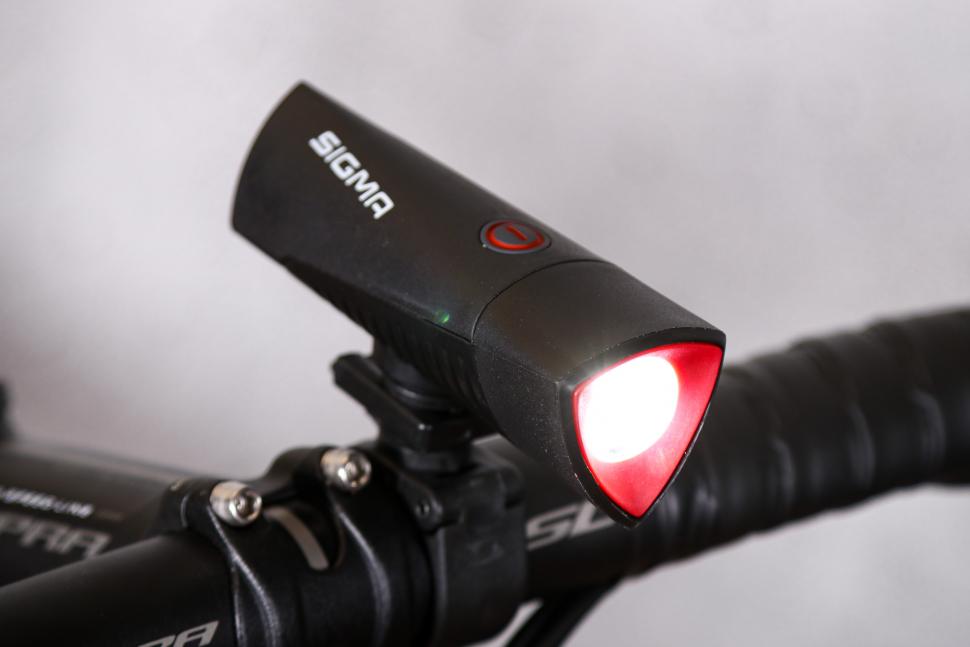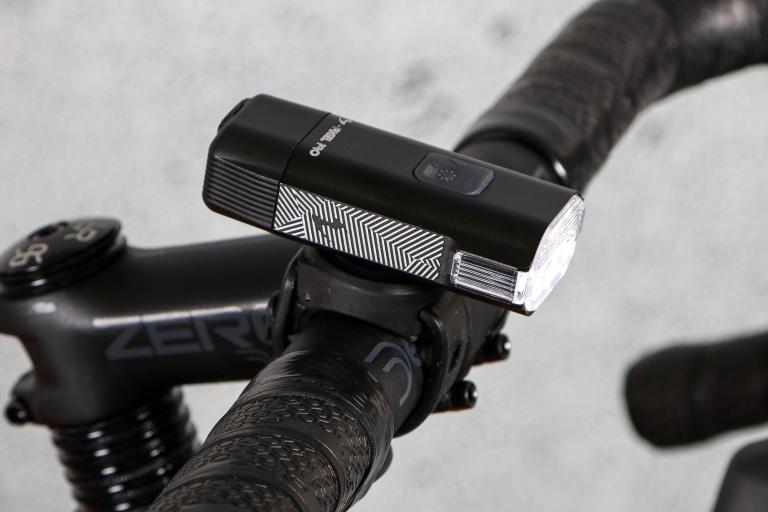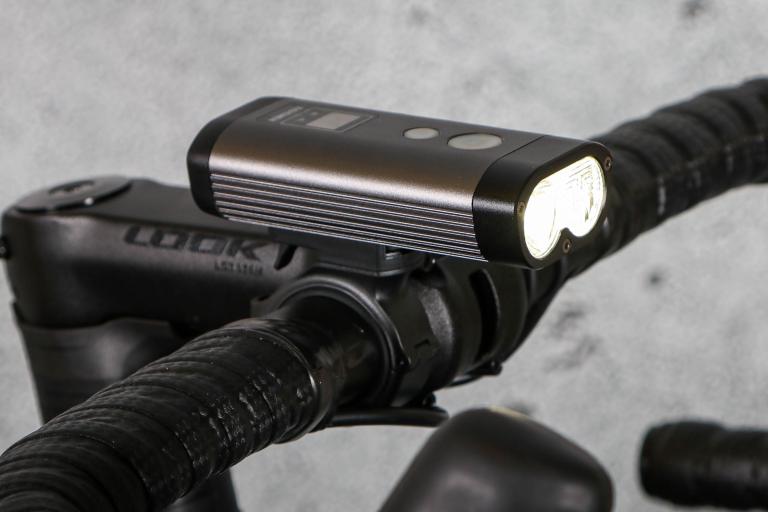- News
- Reviews
- Bikes
- Accessories
- Accessories - misc
- Computer mounts
- Bags
- Bar ends
- Bike bags & cases
- Bottle cages
- Bottles
- Cameras
- Car racks
- Child seats
- Computers
- Glasses
- GPS units
- Helmets
- Lights - front
- Lights - rear
- Lights - sets
- Locks
- Mirrors
- Mudguards
- Racks
- Pumps & CO2 inflators
- Puncture kits
- Reflectives
- Smart watches
- Stands and racks
- Trailers
- Clothing
- Components
- Bar tape & grips
- Bottom brackets
- Brake & gear cables
- Brake & STI levers
- Brake pads & spares
- Brakes
- Cassettes & freewheels
- Chains
- Chainsets & chainrings
- Derailleurs - front
- Derailleurs - rear
- Forks
- Gear levers & shifters
- Groupsets
- Handlebars & extensions
- Headsets
- Hubs
- Inner tubes
- Pedals
- Quick releases & skewers
- Saddles
- Seatposts
- Stems
- Wheels
- Tyres
- Health, fitness and nutrition
- Tools and workshop
- Miscellaneous
- Cross country mountain bikes
- Tubeless valves
- Buyers Guides
- Features
- Forum
- Recommends
- Podcast
review
 2021 Sigma Buster 700 Headlight.jpg
2021 Sigma Buster 700 Headlight.jpg£69.99
VERDICT:
Well made and makes the most of its output, but struggles on value
No need to scroll through flashing mode
Helmet mount included
Decent run time
Secure mount
Basic single LED beam
Not that quick to charge
Weight:
135g
Contact:
At road.cc every product is thoroughly tested for as long as it takes to get a proper insight into how well it works. Our reviewers are experienced cyclists that we trust to be objective. While we strive to ensure that opinions expressed are backed up by facts, reviews are by their nature an informed opinion, not a definitive verdict. We don't intentionally try to break anything (except locks) but we do try to look for weak points in any design. The overall score is not just an average of the other scores: it reflects both a product's function and value – with value determined by how a product compares with items of similar spec, quality, and price.
What the road.cc scores meanGood scores are more common than bad, because fortunately good products are more common than bad.
- Exceptional
- Excellent
- Very Good
- Good
- Quite good
- Average
- Not so good
- Poor
- Bad
- Appalling
Considering its small size, the Sigma Buster 700 Headlight pumps out some decent lumens and a useful battery life, plus it avoids that stupid thing where you have to scroll through the flashing mode to get back to full power. The beam pattern is quite basic, but it is good to see a helmet mount included in the box.
The Buster 700 is a compact unit featuring a single Cree LED which puts out a focused, spot-like beam similar to a torch, rather than a T-shaped beam (with a central spot) such as found on the recently-tested Ravemen CR800.
> Find your nearest dealer here
I really liked the CR800, mostly thanks to its cut-off beam – it stops it wasting the majority of its light in the treetops. Angle the Sigma down though, and it's not too much of a problem.
There is some spread around the outside of the spot which does allow you to pick up the verge and potholes, but not in such a definitive way as some other lights on the market.
You get three solid modes: a 700 lumen, a 375 lumen and an Eco, which is 170 lumen. The burntimes are 2hrs, 4hrs and 8hrs respectively. Not bad considering the smallish battery.
The power button doubles as the battery indicator. No back lighting means you're above 71% charge, green means 70-31%, and red means less than 30%. Burntimes turned out to be within 5% after the third charging cycle, even when the temperature was below freezing.
Performance
The Buster is capable of lighting dark country lanes comfortably at speeds around 20-25mph on full power, and you can still move at a fair old lick on the 375 lumen setting, especially if you know the roads.
Given the burntimes you can get a decent training ride in, especially if you are using wider main roads with cats eyes and white lines marking the edges. Here the 375 lumen setting is ample with good visibility (no sharp corners or technical descents).
Controls
Like most lights you move down through the modes via the power button; high, mid, low and flash. The cool thing is – and I really don't understand why more brands can't do this – that if you're in mid or low mode, a double tap will take you back to high without subjecting you to a disco frenzy on a dark lane as you pass through flash.
It can also be charged from a power bank while you're using it, letting you usefully boost runtimes, and it takes a double click to fire the light up – that cuts down on accidental power-ons in a rucksack. There is no mode memory, but that is not a major issue.
Flash mode is bright at the full 700 lumen – maybe a touch too bright for urban night use unless there's a lot of light clutter already – and it'll certainly get you noticed. It works well as a daytime running light, too.
> The best 2021 front lights for cycling: Our big beam comparison engine plus how-to-choose guide
The Sigma has a rating of IPX4 for weatherproofing, which means it can cope with water splashes from any direction. I had no issues even in heavy rain, or even while giving it the shower test in the bathroom. Just make sure the rubber cover is securely closed over the charging point.
Speaking of charging, it takes around 4.5hrs. Not that quick for such a small unit, but easily doable during the working day.
Mounts
Mounting is via the handlebar mount and a helmet offering. The handlebar mount works for 25.4mm to 31.8mm bars, and the thumbscrew design means it is secure and doesn't vibrate around on rough roads. If you want a quick release, you can get a silicone band as an extra.
The helmet mount uses a Velcro strap through your helmet's vents. It's pretty versatile and its rubber construction will mould to a range of helmet shapes. On my night-time gravel rides I found the Sigma a capable helmet light, giving precise illumination as you are going into bends. Its weight means it's barely noticeable too.
> 22 best rear bike lights for 2021 — boost your day & night visibility
The quality doesn't disappoint. The aluminium alloy body is robust and highly resistant to scrapes from crashes (yes, I decked it on the gravel bike...) or being dropped. The button also has a solid feel to it, and is easy to activate with gloves on.
Value
Since we first reviewed this light in 2019 the price has jumped considerably, from £61.99 to £79.99. That puts the Buster in amongst some very tough competition.
The 800 lumen Ravemen I mentioned earlier is just £64.99, and it's brighter with a better beam pattern. It does have that annoying scroll-through-flash-mode thing, though.
Moon's Meteor Vortex Pro 1300 is the same price as the Sigma, but as you can no doubt guess kicks out a huge 1,300 lumens on full power (for an impressive 1.5 hrs), or 1,000 lumen for 2.5hrs. It also has a VLS mode for tweaking the output to anywhere in the range, and it is weatherproof up to IPX7.
The Meteor isn't perfect, though. You have to scroll through flashing mode here too, and the bar mount can slip on rough roads. The beam pattern is also similar to the Sigma.
Conclusion
With lights it is not all about power, it's about what they do with that power. The beam pattern of the Sigma is simplistic, but it does chuck a lot of light down the road and the burntimes are decent. The main/dipped beam idea is a bonus, but it does struggle on price against some very powerful opposition.
Verdict
Well made and makes the most of its output, but struggles on value
road.cc test report
Make and model: Sigma Buster 700 Headlight
Size tested: 700 lumens
Tell us what the light is for, and who it's aimed at. What do the manufacturers say about it? How does that compare to your own feelings about it?
Sigma says, "A whopping 700 lumens and 100 metres of visibility make the BUSTER 700 a reliable partner for your trips through the night. Using the integrated slider the BUSTER 700 can be pushed onto the helmet holder and removed easily."
It's a good light that is well made. The biggest bonus is the fact you don't have to scroll through flashing mode.
Tell us some more about the technical aspects of the light?
Maximum light output: 700 lumens
Burn time: 2 h (power mode), 4 h (standard mode), 8 h (eco mode), 18 h (flashing)
Able to be charged during use
Four light modes: power mode (700 lm), standard mode (350 lm), eco mode (170 lm), flashing
Weight: 145 g (incl. Bracket)
Splash resistant in accordance with IPX4
360° adjustable bracket
Charge time: 4,5 h
Beam range: 100 m
MICRO-USB recharging function
Tool-free mounting
Switch on protection (double click for ON)
Two-stage battery/charge indicator
CREE LED
Rate the light for quality of construction:
8/10
Rate the light for design and ease of use. How simple was the light to use?
8/10
Rate the light for the design and usability of the clamping system/s
8/10
Rate the light for waterproofing. How did it stand up to the elements?
8/10
Better than I was expecting for IPX4.
Rate the light for battery life. How long did it last? How long did it take to recharge?
7/10
Rate the light for performance:
7/10
Rate the light for durability:
8/10
Rate the light for weight:
8/10
Rate the light for value:
4/10
Tell us how the light performed overall when used for its designed purpose
It's good quality light, reliable and simple to use.
Tell us what you particularly liked about the light
It's a well made unit.
Tell us what you particularly disliked about the light
The spotlight beam wastes a lot of light upwards.
How does the price compare to that of similar products in the market, including ones recently tested on road.cc?
It's pricey, to be honest. The Ravemen mentioned in the review is considerably cheaper and has a quality beam, while the Moon chucks out nearly twice the power for the same money. The Sigma does have the bonus of not having to scroll through flash mode, though.
Did you enjoy using the light? Yes
Would you consider buying the light? Ummmmm......not at full price, due to the tough competition
Would you recommend the light to a friend? Yes
Use this box to explain your overall score
All things considered the Sigma is a good quality light; well made and intuitive to use. It's up against some tough opposition, though, given its output and price.
About the tester
Age: 42
I usually ride: This month's test bike My best bike is: B'Twin Ultra CF draped in the latest bling test components
I've been riding for: Over 20 years I ride: Every day I would class myself as: Expert
I regularly do the following types of riding: time trialling, commuting, club rides, sportives, fixed/singlespeed,
Since writing his first bike review for road.cc back in early 2009 senior product reviewer Stu has tested more than a thousand pieces of kit, and hundreds of bikes.
With an HND in mechanical engineering and previous roles as a CNC programmer/machinist, draughtsman and development engineer (working in new product design) Stu understands what it takes to bring a product to market. A mix of that knowledge combined with his love of road and gravel cycling puts him in the ideal position to put the latest kit through its paces.
He first made the switch to road cycling in 1999, primarily for fitness, but it didn’t take long for his competitive side to take over which led to around ten years as a time triallist and some pretty decent results. These days though riding is more about escapism, keeping the weight off and just enjoying the fact that he gets to ride the latest technology as part of his day job.










Car crashes outside Poundland in Abingdon town centre...
I'm impressed by my DX1000, the keys look difficult for picking, though I'd like to seethe LPL having a go at one. And it definitely feels the part...
So cyclists will be punished far heavier than killer drivers. Sums up the fkd up UK.
I've done the 312 and other closed roads events like the Etape Caledonia and each time there is bad press like this in advance but on the day the...
It's not that surprising that Mr GrumpyGobshite hasn't seen the 20mph limit "stuck too [sic] in 47 years" as it was only reintroduced in 2004, it...
Spiral wound cables can expand and contract and possibly help with brake modulation, as well as make tighter bends. ...
My TL200 rear light stopped working after 14 months - it seems IP ratings arent what they say on the tin! I have tried different brands and all...
I've no idea what the situation is here, but I've seen plenty of "under construction" cycle lanes where there are only signs/barriers around the...
whereas the whole point is that they didn't hit you this time
AIUI an entering-circulating accident [sic] would be when the vehicle entering the roundabout fails to give way to the vehicle circulating.